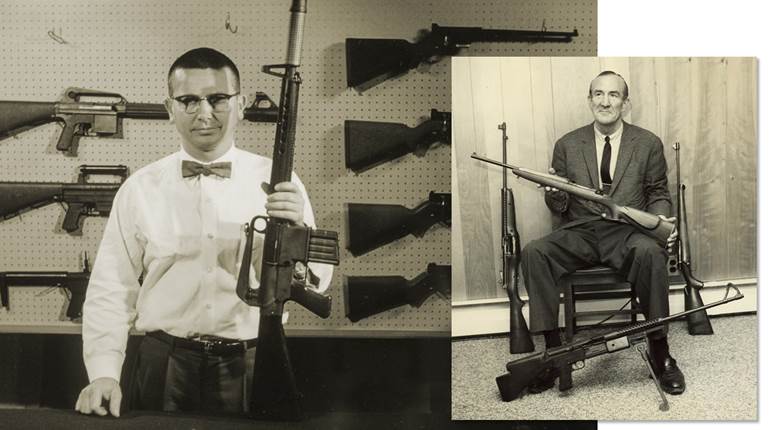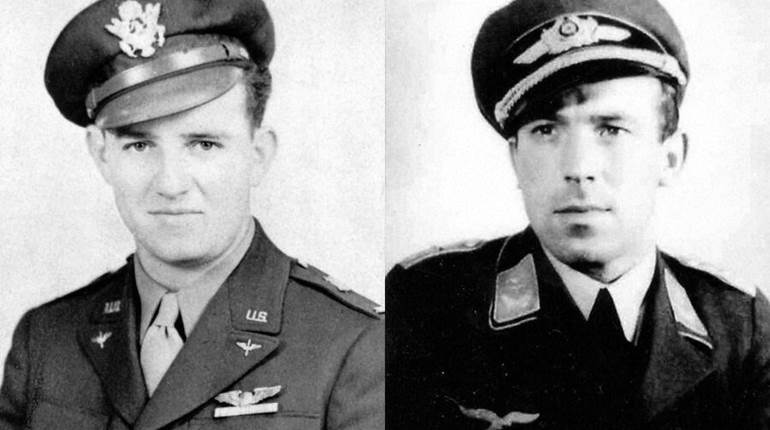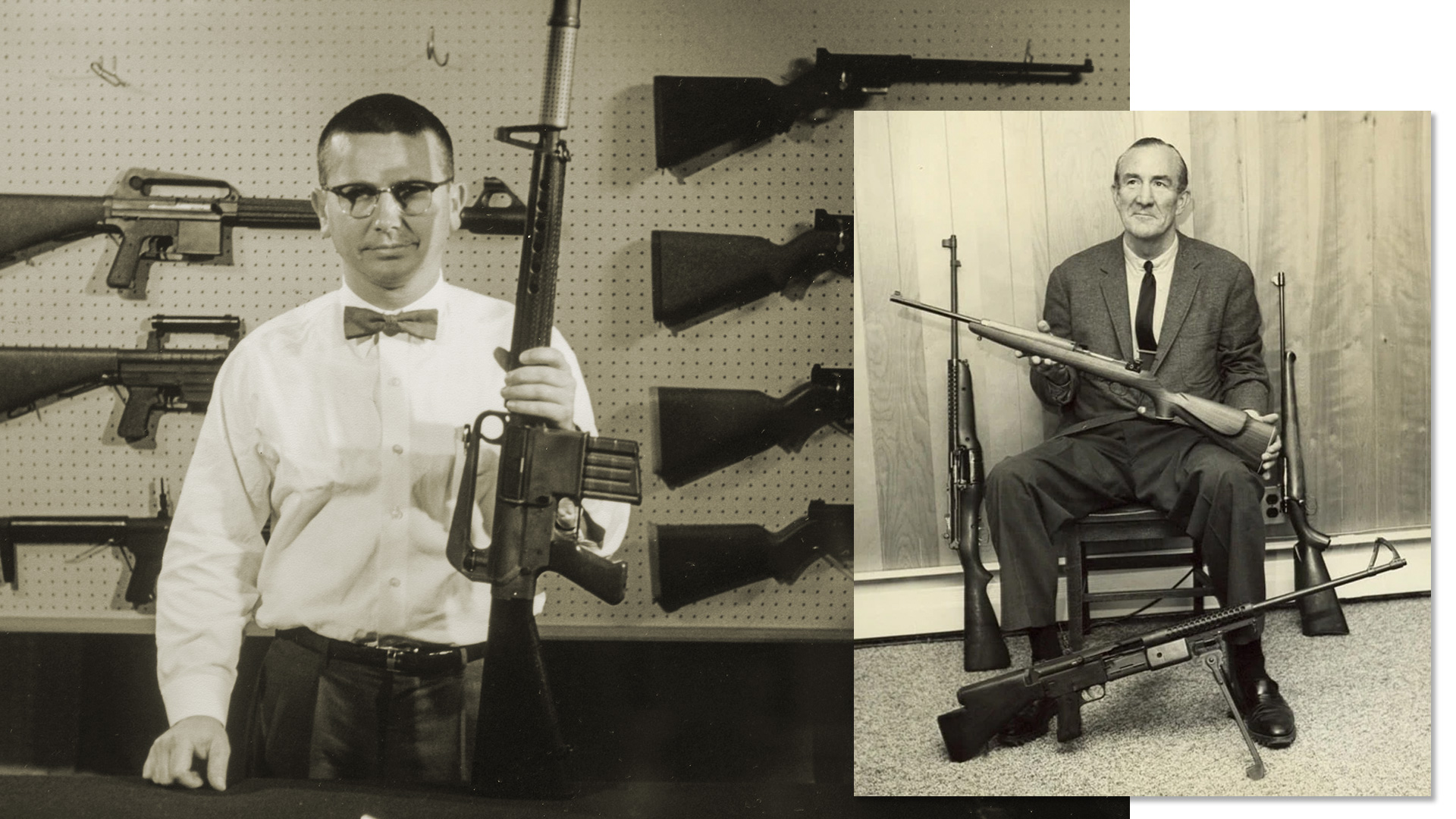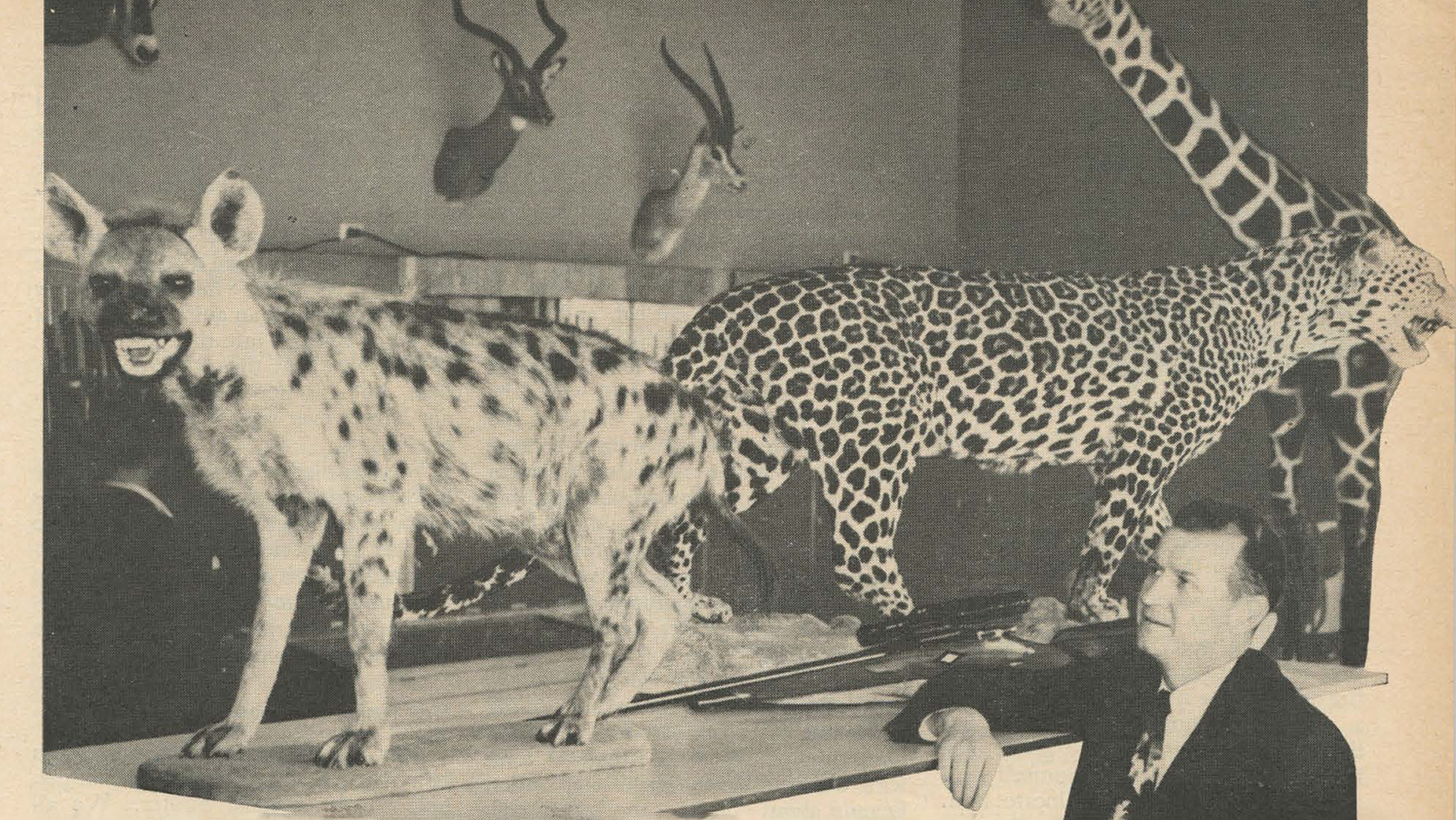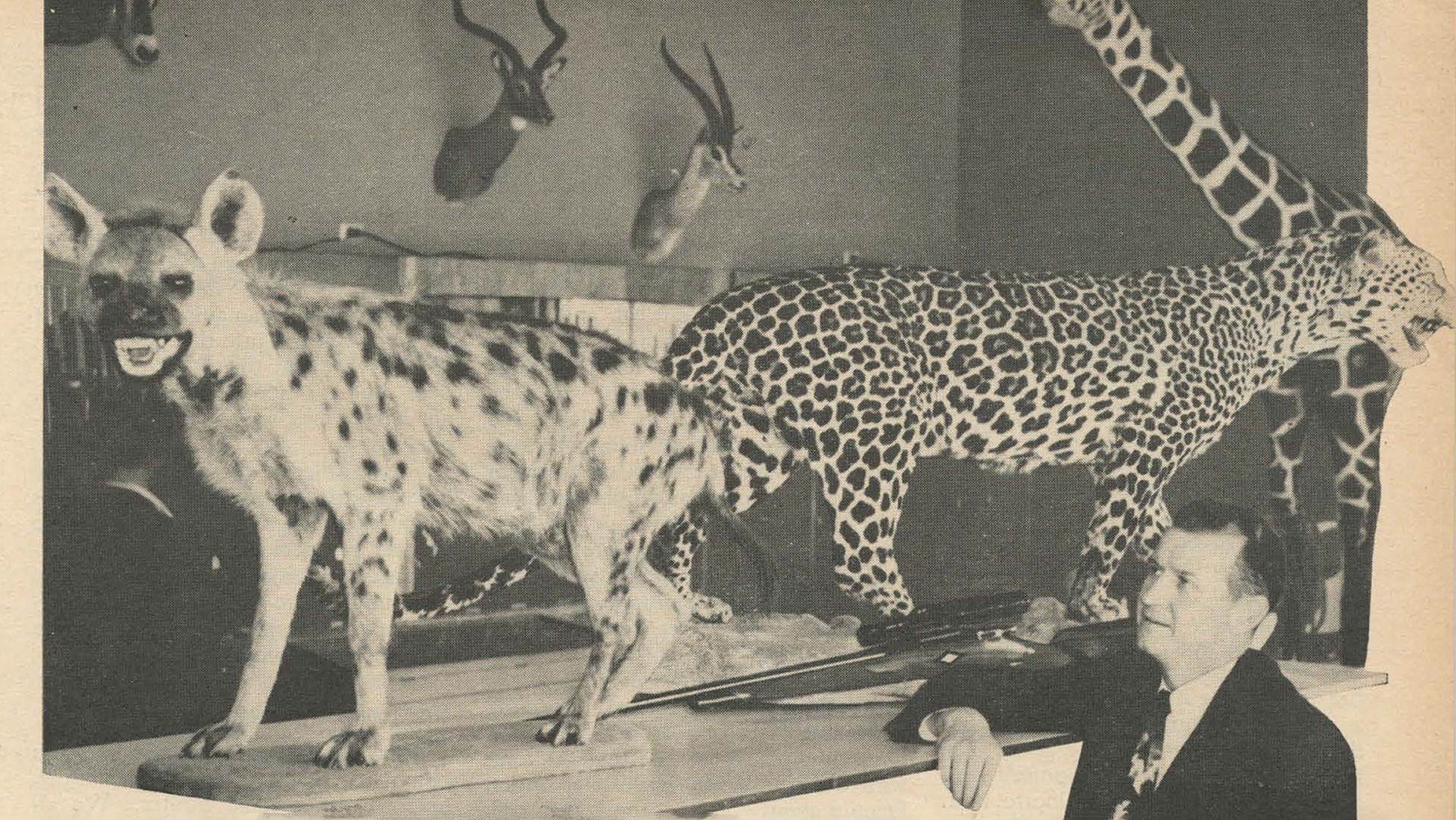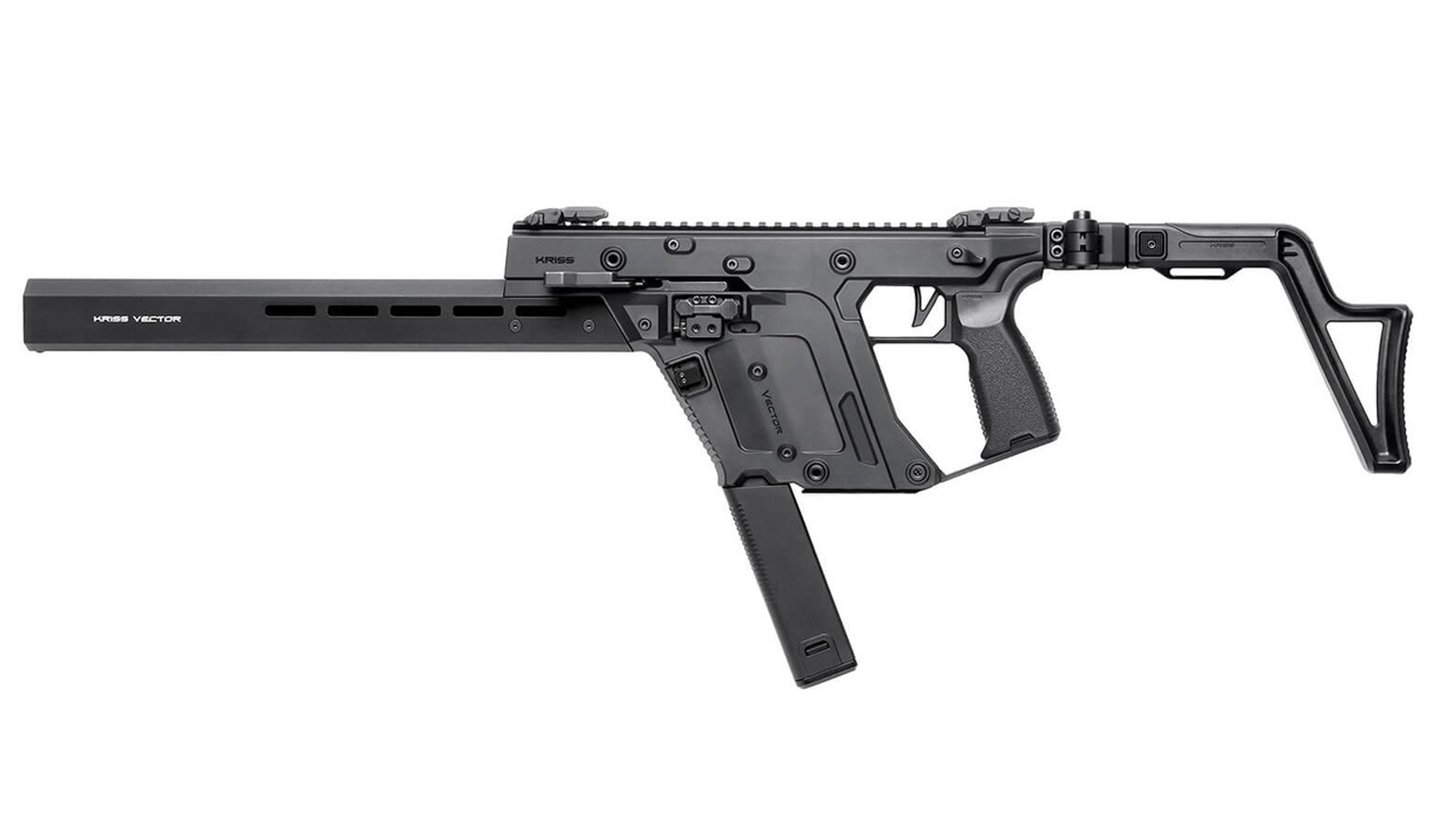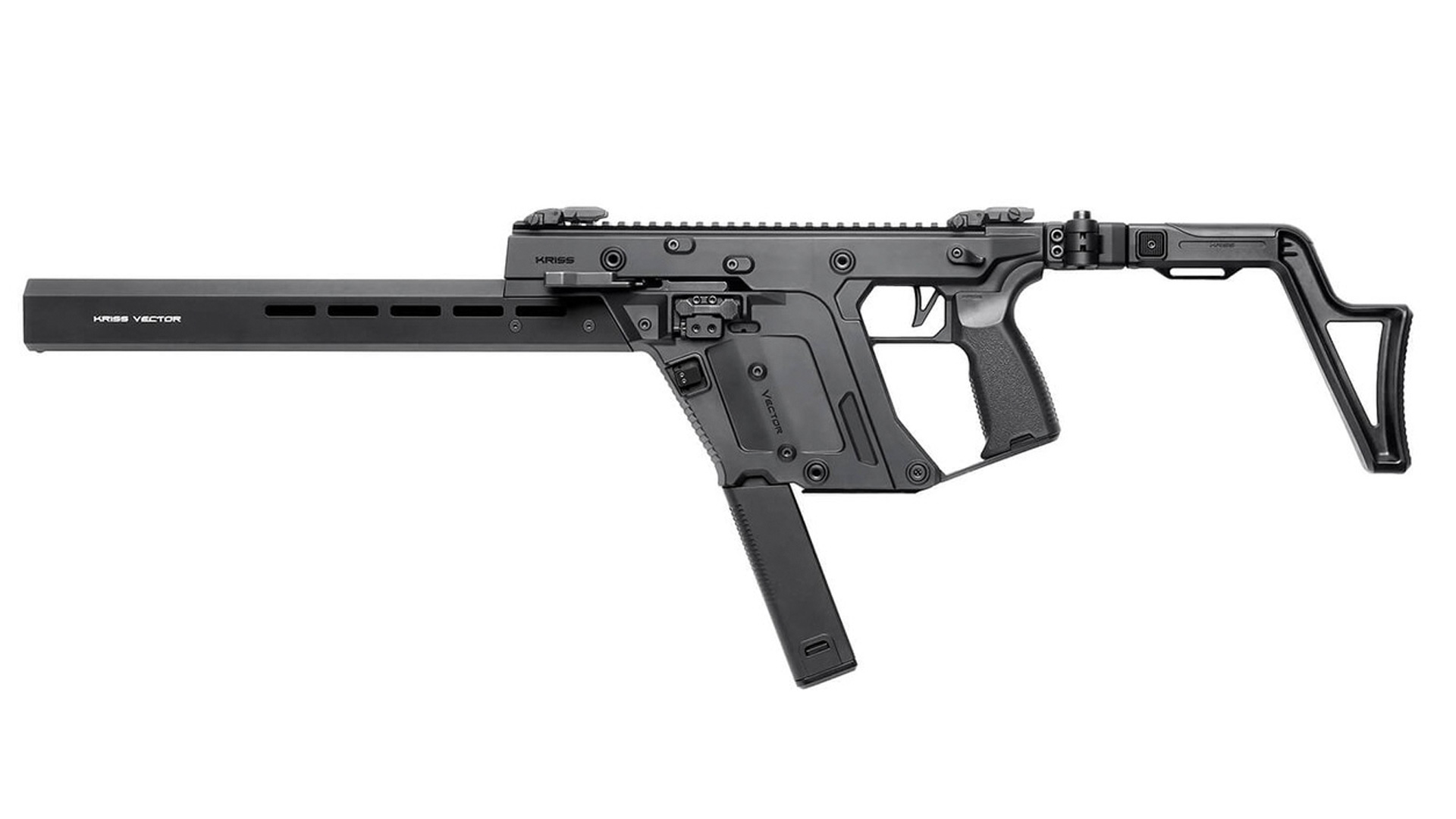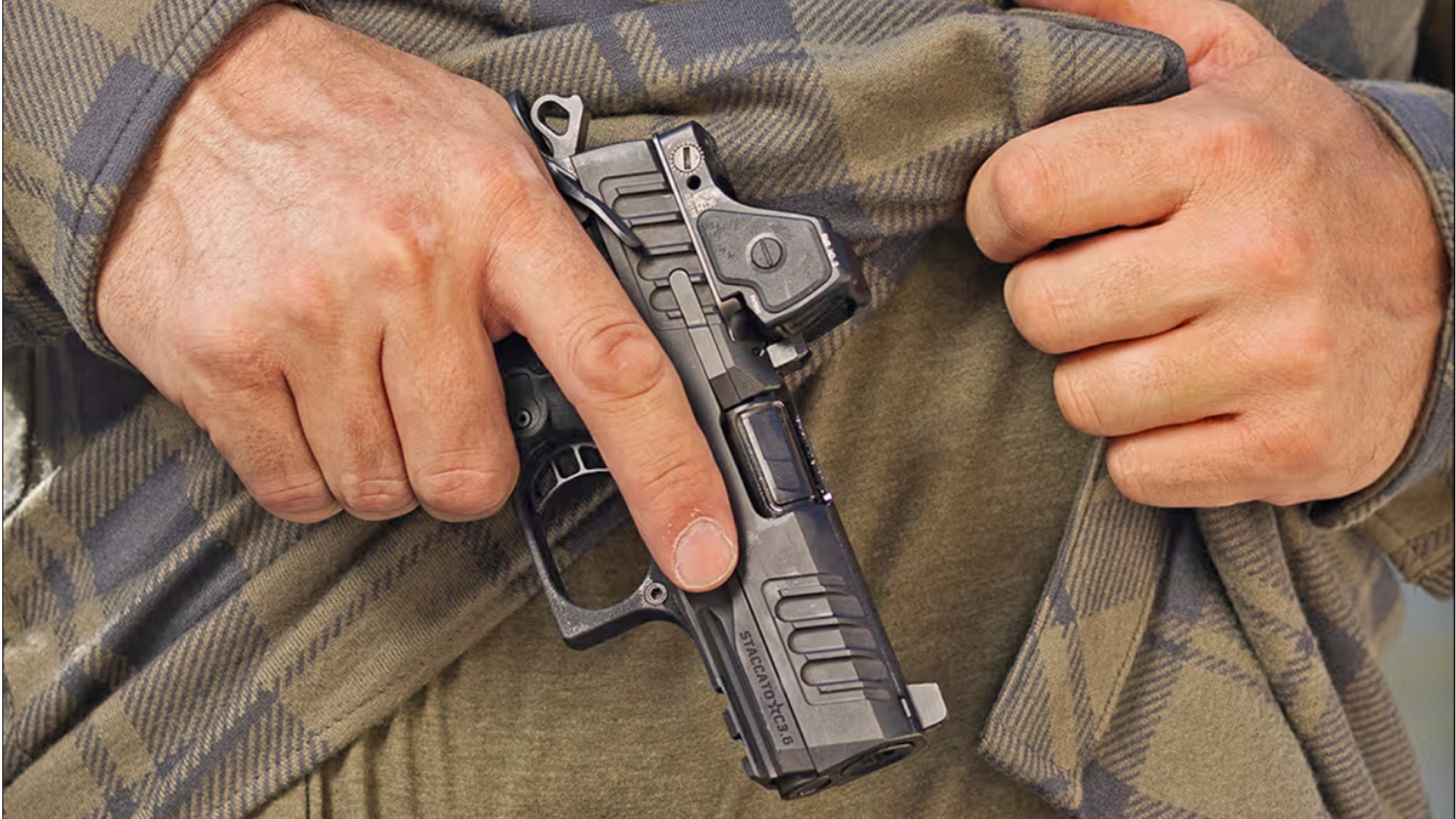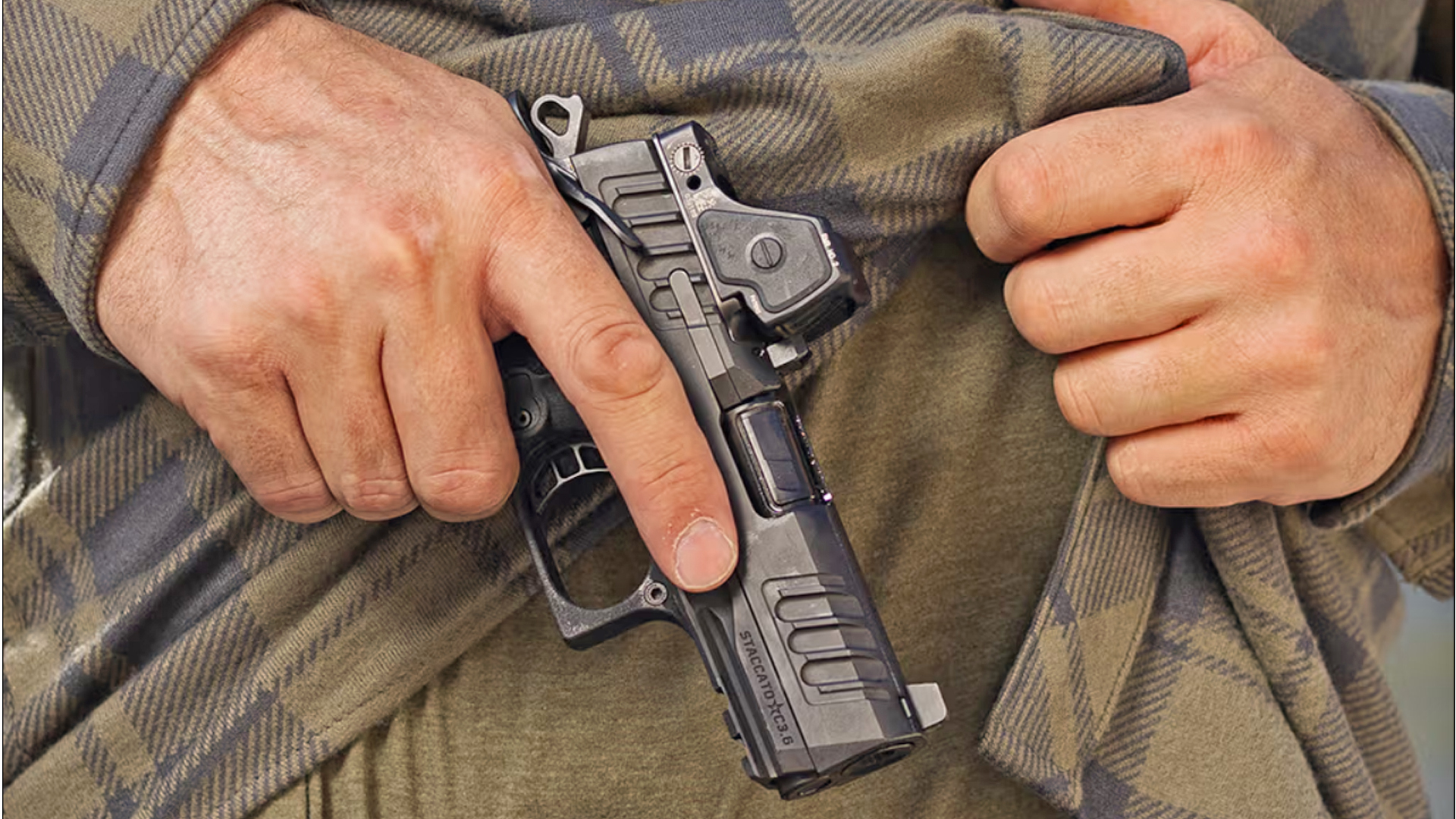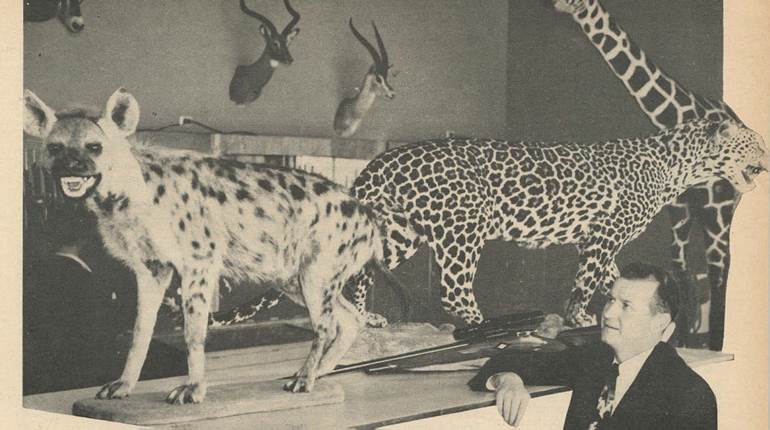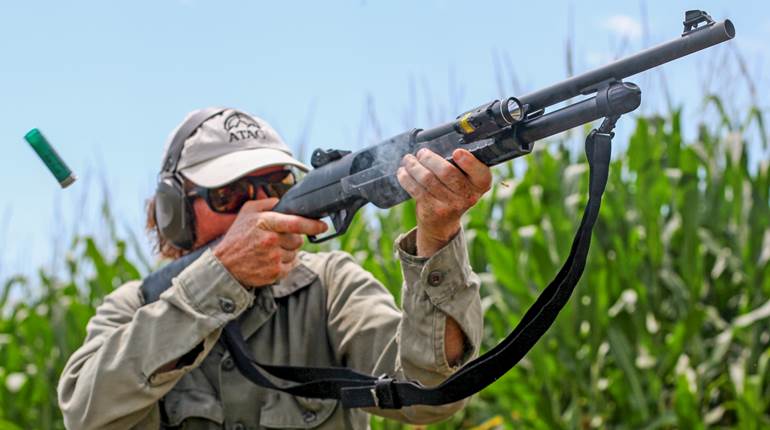
Immediately after World War I ended, Germany began a clandestine system of rearmament called ‘Aufrüstung’, quietly flouting the restrictions placed on it by the Allies at Versailles in 1919. This was hugely expanded after the Nazi party came to power in 1933. A small part of this was the limited issue of telescopic-equipped rifles, mostly left over from World War I.
Uniquely within the army, it was only the SS under Heinrich Himmler (who was himself a keen rifle shooter) who were actually trained to shoot to any sort of standard. In the mid-1930s, SS snipers began to be equipped with the first purpose-made sniper rifle to be adopted post-armistice, the Karabiner 98k, with a short side rail mount. However, due to the shortage of new K98k rifles, many re-worked World War I-era Gewehr 98 and Karabiner 98a rifles were also being used.
They had a steel rail attached to the left side of the receiver with three mounting screws and a lever-operated, quick-detach, U -haped scope mount holding either a 4X Ajak, Hensoldt, Kahles or Zeiss telescopic sight. These began to be issued in early 1941 and were the first of a very large number of variants of sniper rifles to be subsequently fielded by Germany. In practice, many of the German snipers entering Russia in June 1941, found it more practical to equip themselves with some of the many captured Mosin-Nagant 91/30 rifles with PE scopes, and numbers of photographs exist from this period showing them carrying Soviet rifles.
Indeed, Sepp Allerberger, one of the highest-scoring of all the Wermacht snipers, began his career using a captured Mosin-Nagant rifle. There were loud complaints from senior German field staff about equipment shortages in general and sniper rifles in particular. So, Germany embarked on what would prove to be an expensive and time-consuming path, creating more variants of telescopic-equipped rifles than were employed by Britain, America and Russia combined.

Although Germany began the war ill-equipped for sniping, it soon made up for this by introducing a truly bewildering range of scoped rifles. Aside from the initial short-side rail models, the earliest large-scale production sniper rifles were the turret mount K98k rifles, which were loosely based on pre-war commercial sporting models. In 1939, the Army Ordnance Supply Offices (H.Za) based in Hannover, Königsberg and Spandau were tasked with setting up a sniper rifle manufacturing program.
They had no choice but to use production rifles, but they determined only those that, on inspection, had perfect bores were to be selected for conversion. Initially the Zielfernrohr 39, a 4X scope mated to a low-turret mount and designated the ZF.39/K98k, was scheduled to be put into production in late 1939. After the invasion of Poland, the introduction of a second model, the high turret, was introduced.
This was a result of the use of various commercial telescopic sights that did not have sufficient clearance between the cocking handle and the scope body. In practice, the 5 mm difference is extremely hard to see, even when you are looking for it. The two-piece ring mounts used a swiveling front pillar and sliding-plate rear that unlatched by means of a turning a thumb-lever clockwise.

It was a strong mounting system which theoretically could be removed and refitted without affecting zero. Most were produced by Mauser Werke and J.P Sauer and Sohn. After 1942, various other contractors began production and rifle standards began to decline, although their accuracy appeared to remain fairly constant. Late-war manufacture high turret examples are by far the most commonly found now, but all should be treated with great caution as today there are more good fakes around than originals, and a cast-iron provenance is almost worth as much as the rifle.
The majority of Germany’s most successful snipers made their scores using one of the turret models. Not satisfied with the introduction of a ‘standard’ type, in 1941 it was suggested by Hitler to the H.Za that some form of sight be provided that bridged the gap between the standard iron sights and the full-power optics of the sniper rifles. It would be a scope that could be used by sharpshooters who were not necessarily sniper-trained.

It proved to be a hugely troublesome and damaging project from a manufacturing point of view. The result of testing produced the tiny 1.5X Zielfernrohr 41 (Zf.41) optical sight. It could barely be called a telescopic sight, but it was neither fish nor fowl and liked by no soldier who had to use it. The left side of the rear sight band on the rifle was machined with a groove that accepted the dovetail base of a two-piece mount. In use, the extremely long eye relief, the need for special tools to adjust the zero and the tiny field of view of about three degrees meant that it had extremely poor light-gathering properties.
The first of these sights were produced in July 1941, with a steel carry-case, tinted lenses, a sunshade and cleaning tools. The grand plan was that one be fitted to each German infantry rifle, although as it transpired, only 6 percent of Mausers were ever machined to accept it. In 1943, a conversion kit with an adapter plate was introduced that was theoretically capable of being fitted to any service K98k.
It was soon realized that the majority could not be used due to variations in manufacturing tolerances on the rear sight band. Despite its apparent uselessness, it continued, in varying forms, to be manufactured up to the end of the war. Amazingly, it was produced in the greatest quantity of any wartime German scope, with some 100,000 believed to be manufactured.

None of the recorded German snipers who achieved any reasonable tally used the Zf.41. It was, as armorer Roy Dunlap wryly observed in his seminal book, “an optical freak and best only in a desert country with bright sunshine most of the time.” Trained snipers avoided it. Helmut Wirnsberger who served with the 3rd Mountain division and later became an instructor said dismissively of the Zf.41 “The 1.5[X] power telescopic sight was not at all sufficient.”
The story does not quite end there though, for a new type of arm, the assault rifle, had been in preparation since 1941. The original model, the MKb.42, uniquely used a short, 7.92 mm Kurz cartridge of which its 300-meter range effectively precluded it from being used for serious sniping. Despite this, some were fitted with Zf.41 sights and later models such as the FG.42, MP.43 and StG.44 were sometimes fitted with ZF.4 scopes.
Ironically, this was actually an idea many decades ahead of its time. Modern infantry combat rifles are now almost all equipped with an aim-assist optical sight (SUSAT, ELCAN, ACOG etc.) to aid the infantryman with target acquisition. It was perhaps fortunate for the allies that the available technology in Germany at the time was inadequate and wartime demands on manufacturing too great.
If Germany had stopped there, perhaps they might have been able to produce sufficient scoped rifles to meet the requirements of the armed forces, which by July 1944, were estimated to be 5,000 scoped rifles per month. However, it appeared that every military unit within the Third Reich wanted its own variant of sniper rifles. In 1943, production had begun of another pattern based on a popular hunting rifle used prior to 1914.
The single-claw mount rifles use a front block mounted on the knox form into which a heavy claw mount locked; the rear being pushed down into a slot and secured by means of a spring catch. Most, if not all, seem to have been made by Steyr-Daimler-Puch. As if this was not placing enough strain on resources, another variant using a double-claw was also put into production at roughly the same time, predominantly made by Gustloff Werke.

These almost mirrored the World War I claw-mount system, albeit with both mounts overbore and not partially offset as had been the case previously. The front mounts locked into a double slot on the knox form, and the rear claws into a similar rear base. The mounting system was slightly unusual in using a pair of spring-loaded locking levers opened by finger pressure.
This system was prone to jamming if dirt entered the rear mount latches or slots, and like all mounts, they could freeze solid in the cold weather of the Eastern Front. The scopes used varied greatly, from early commercial patterns like Hensoldt with only a range drum, to sights by Opticotechna or Nickel that had both range and elevation drums as well as focusing rings. One oddity of these rifles is that they sometimes employed half rings, onto which the body of the scope was soldered.
This was due to the wide variation of scope patterns used. Some of these could not be properly set up for correct eye relief using full diameter rings due to the positioning of the elevation drums and differing diameters of the objective bell-housing. There seems to be no consensus about how many of these were manufactured in total, certainly several thousand and the majority of the double-claw models were issued to the SS.
Although production of the short-side rail rifles had continued, it had not proved an entirely reliable system. Due to recoil forces, despite center-punching them and fitting extra base pins, the short mounting platform often loosened off the fitting screws. The resulting play between the mount and base ruined accuracy of course, so in the fall of 1943, production of an improved model with a long-slide rail began.

However, in order to do this, the H.Za decided that the solution was to produce a special variant K98k with a modified left-side receiver wall. Whilst it could not be argued that creating a stronger and longer receiver face was a sound engineering solution, in view of the problems the small-arms factories were already having in fulfilling existing contracts for standard rifles, this decision flies in the face of logic. The problem was that tooling to do this did not exist, and standard tooling could not be altered on existing production lines.
As a result, the vast bulk of these rifles made came only from Gustloff-Werke. By the time they began to roll off the production lines, it was already early 1944, and so J.P Sauer and Sohn were co-opted to make additional rifles. As was usually the case, a wide variety of scopes were fitted, Dialytan and Hensoldt being the most often found. One unusual feature found on a few Gustloff rifles was the fitting of a double-set trigger to eliminate the gritty original trigger action, although how many of these were produced is unknown.
Although the numbers of bolt-action rifles being converted for sniping was inadequate, the Wermacht were still pursuing their goal of introducing a full-size semi-automatic rifle, combining accuracy with speed of fire. To write about the trials and tribulations of the first production model, the Mauser designed Gewehr 41M would take a book in itself; suffice to say what was produced was an overly complex, heavy, unreliable and inaccurate weapon that met none of the criterion originally laid out. The main issue was its gas-trap operating system, which was flawed from the outset, and less than 13,000 were produced.
However, there were great hopes for its successor, the Gewehr (or Kar) 43. This was a Walther design based on the Gewehr 41W, but using a far more efficient system that tapped gas from the barrel and it owed much to the design of Soviet SVT40’s that had been captured. The G.43s were manufactured from the outset to have a scope fitted, having a dovetail base machined into the right side of the receiver.
In theory, any suitable scope and mount could be fitted turning the weapon into a proto-sniper rifle. So keen were the army to adopt what they saw as the solution to their problems regarding an all-purpose infantry rifle, that three companies, Berlin-Lubeker Maschinefabriken, Gustloff Werke and Carl Walther Waffenfabrik were ordered to set up immediate production. The first G.43 rifles appeared in early spring 1943 and were still coming off the production lines as the allies rolled into Germany.

Possibly the most interesting feature of these rifles was not the mechanical system but the adoption of a new compact scope, the Zf.4, that was not dissimilar in form to the very successful Russian PU scope. For the first time, the German sniper was able to adjust both windage and elevation using drums, the range drum on top being graduated to 600 meters.
The scopes were mounted on the right of the receiver with a lightweight cast rail system locked in place with a long thumb lever. By 1945, the Germans were experimenting with lens coating to increase light transmission, although the end of the war prevented this ever being applied in practice. Nevertheless, in total somewhere above 50,000 sniping variants of the G.43 were produced.
In use they proved adequate, lacking the range of the K98k’s but having the ability for rapid follow-up shots. Sepp Allerberger commented that while he always used the K98k for accurate long-range shooting, during the mass attacks often favoured by the Russians the G.43 was particularly useful. He adopted a policy that had been used for some time by soviet snipers, of shooting fast and low, aiming for the stomach.
“The screams of the wounded men caused their comrades to falter and the attack began to lose momentum.” This would not have been possible with the K98k, but the G.43 could put down a level of fire equivalent to that of three riflemen. None of the German snipers who subsequently wrote of their experiences admitted to using the G.43 for anything other than short-range shooting.
In Truppedeist, a post-war German armed services magazine, Matthais Hetzenauer stated it was accurate only to 400 meters, and Wirnsberger stated 500 meters. Interestingly, they and Allerberger all agreed that if the lack of accuracy could be overcome, and the rifle made lighter, they would prefer it over the K98k. Then there was also the matter of ammunition.

German snipers were primarily issued with three types, Ball (s.S), Armor-piercing (S.m.K.H), and Tracer (S.m.K.L). Later in the war, in response to the perceived use by the Russians of explosive ammunition, Explosive Incendiary Observation ammunition (B. Patrone) was issued solely for Eastern front use. Whilst all ammunition worked well in the K98, allowance naturally had to made for differing bullet weights, which altered the point of impact.
Bruno Sutkus commented that tracer was limited to 300 meters due to the varieties of its projectile weight. But there was a different problem when using the G.43. Testing had revealed that the gas system often failed to operate properly if insufficient gas pressure was generated. In some instances, the fired case could not clear the chamber and would jam, a problem any shooter who has used a semi-auto pistol will recognize.
Of particular interest, and little-known today, was the successful development of the N. Patrone cartridge for use in suppressed rifles, which used a reduced propellant charge. Although it limited the range of the 7.92 mm bullet to under 200 meters when used with the schalldampfer suppressor for the K98k, it was yet another step forwards in the inexorable march of technology that marked the development of sniping arms and ammunition during World War II.
Although some types of ammunition (such as semi-armor piercing) have subsequently been linked to specific sniper use, there is little concrete evidence of this. Sniper memoirs often refer to the use of varied types dependent entirely on circumstances. Tracer for example, was particularly useful for setting fire to the thatched roofs of Soviet farms.
So how effective were the German sniper rifles? When interviewed in 1967 by Captain Hans Widhofner in Truppendeinst, Sepp Allerberger, who had racked up 257 kills, said of the turret-mount ZF.39 combination was expected, without fail, to make a head or chest shot at 400 meters and to hit a standing man at 600 meters. Matthais Hetzenauer, with 345 kills, believed that he could manage 600 and 800 meters respectively.

Anyone who has shot one of these original rifle and scope combinations will know just how difficult this is to achieve, as the vertical post reticule is very thick, obscuring the target at longer range. The magnification by modern standards is mediocre and no dedicated sniper ammunition was issued. Neither can these scopes be easily adjusted for windage, for whilst the top-mounted drum takes care of range, there is a very fiddly grub-screw system on the rear mount that has to be adjusted for windage, although the Zf.4 did remedy this.
Regardless, most snipers would zero their scopes at 300 meters and then use their experience to judge the amount of deflection, not an easy task even for a skilled sniper. Exactly how effective the G.43 was is a matter of debate. German ordnance tests in 1944 unequivocally stated “The shooting performance of the K 43 with 4 power Zf telescopic sight has so far not reached the level of the K98k with commercial telescopic sight.”
Tests of captured rifles by the U.S ordnance also showed problems with maintaining accuracy, case ejection and excessive muzzle flash. This was so bad that the rifle could not be used in low light as it instantly gave away the sniper’s position. The fact remained that the Germans were gradually finding out what the Russians already knew, that the complexity of a semi-auto rifle and the number of reciprocating parts meant that it was virtually impossible to replicate the same level of accuracy produced by a bolt-action rifle.
By the start of 1945, German ordnance was actually considering the feasibility of hand-building G.43s to be able to achieve long-range accuracy. The main problem that hindered the Germans was not technical, but the continual dilution of their manufacturing ability with the introduction of so many different models. But in the long run, this was to unwittingly pave the way for the new sniping technology that began to appear after the war.












